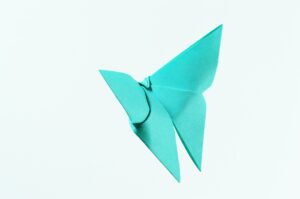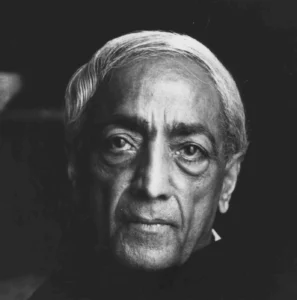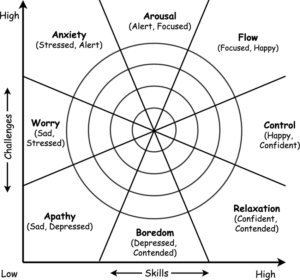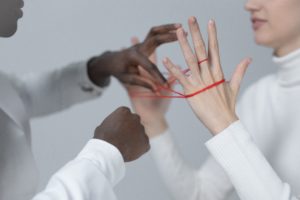In the tapestry of human existence, creativity shines as a guiding star, reminding us of the transformative power that lies within us. Much like a butterfly emerging from its cocoon, creativity is a symbol of growth, change, and the boundless potential that resides within every individual. Jiddu Krishnamurti’s profound quote about the butterfly beautifully encapsulates the essence of this transformative journey, which we will explore in this article.
The Scientific Link Between Creativity and Mental Health
Scientific studies have long recognized the profound impact of creativity on mental health and well-being. A study published in the “Journal of the American Art Therapy Association” (Stuckey & Nobel, 2010) explored the effects of engaging in creative activities on individuals’ emotional state. The results revealed that participating in creative endeavors led to a significant reduction in stress and anxiety levels, suggesting a positive correlation between creative expression and improved mental well-being.
Art Therapy: A Path to Self-Discovery and Healing

Art therapy, a field that combines psychological therapy with creative expression, has gained prominence for its transformative effects on individuals dealing with mental health challenges. The “American Journal of Psychiatry” published a study by Kaimal et al. (2017), which demonstrated that engaging in art-making significantly reduced cortisol levels in participants, indicating a stress-reducing effect. Art therapy provides a safe space for individuals to explore their emotions, confront their traumas, and express themselves non-verbally, fostering a deeper understanding of their inner world.
Neuroscience and Creativity
Neuroscientific research has unveiled the intricate relationship between creativity and the brain. The brain’s default mode network (DMN), a network of regions associated with self-reflection and imagination, plays a crucial role in creative thinking. In a study published in “Frontiers in Human Neuroscience” (Beaty et al., 2014), researchers found that individuals with more active DMNs displayed higher levels of creativity. This suggests that engaging in creative activities can enhance the brain’s capacity for divergent thinking and innovation.
The Krishnamurti Analogy: Bridging Science and Metaphor

Krishnamurti spent part of his life teaching all over the world: lecturing, talking to people and writing inspirational diaries. All his talks and many of his private conversations have been published and are still in print.
His lectures are thought provoking and individualistic. He continually pointed out our own responsibility in changing our selves – as the only way to make this world a better place. Dependence on others – psychologically – may be human, but will not make us happy (or so he says – this is where I have to disagree a bit).
Krishnamurti’s analogy of the butterfly finds resonance in scientific findings. The transformative process of metamorphosis experienced by a butterfly reflects the neuroplasticity of the human brain. Just as the caterpillar’s neural connections reorganize during its metamorphosis, engaging in creative endeavors can rewire our brain, fostering cognitive flexibility and adaptability. He also found an analogy in the meaning of awareness and our transformative path. Krishnamurti felt that a large part of our confusion is from repetitive thoughts, and they are repetitive because not completed. By thinking these through to the end they would no longer clamor in us, and the mind would be freer and more spacious, more “aware.” He worked enormously hard for many years to clarify his own mind, and this work was part of the background that enable him to be a teacher.
If you look into your minds, you will see it’s like thousands of butterflies whirling about! You can hardly trace a single idea in this complexity. A way to bring clarity to the mind is to write down your immediate thoughts and feelings in response to the events of the day, and then ponder them. If you emphasize one particular problem in this writing, it will gradually lead to all others.
Art Therapy as a Catalyst for Personal Growth
Art therapy, as a structured form of creative expression, has been recognized for its role in facilitating personal growth and self-discovery. A study in the “Journal of Counseling & Development” (Malchiodi, 2003) highlighted how art therapy helps individuals explore their emotions, improve self-esteem, and develop coping mechanisms. This echoes Krishnamurti’s message of embracing transformation – in both the artistic and personal realms – as an essential part of the human experience.
Embracing the Unpredictable: A Neuroscientific Perspective
Neuroplasticity, the brain’s ability to reorganize and form new neural connections, is a fundamental principle underlying creativity and transformation. A study published in “Nature Reviews Neuroscience” (Maya Vetencourt et al., 2008) demonstrated how the brain’s plasticity allows for adaptability in response to learning and experiences. This aligns with the idea of embracing the unpredictable, both in the creative process and in life, to foster personal growth and transformation.
State of flow

The state of flow, a psychological state where individuals are fully immersed and focused on a particular activity, has been recognized as a transformative experience that holds immense benefits for the brain and overall well-being. When engaged in a single creative activity that captivates our attention, such as painting, playing an instrument, or writing, the brain undergoes a remarkable process of synchronization and heightened cognitive function. Studies in neuroscience have shown that the state of flow is associated with increased alpha and theta brainwave activity, indicating enhanced attention and relaxation (Csikszentmihalyi, 1990).
During the state of flow, neural networks responsible for attention, creativity, and problem-solving align harmoniously, leading to a surge in productivity and a sense of timelessness (Nakamura & Csikszentmihalyi, 2014). This state not only nurtures our capacity for creativity but also supports neuroplasticity, the brain’s ability to rewire itself in response to new experiences. Neuroimaging studies have revealed that activities leading to flow, such as music improvisation, engage a broad network of brain regions including the prefrontal cortex and the limbic system, contributing to enhanced cognitive flexibility and emotional regulation (Berkowitz & Ansari, 2008).
As we lose ourselves in the creative process, our brain is nourished with a cocktail of neurochemicals that amplify positive emotions, reduce stress, and enhance cognitive abilities. The release of dopamine and endorphins, often associated with flow, not only elevates mood but also promotes focused attention and motivation (Dietrich, 2004). Just as a river carves its path through consistent flow, immersing ourselves in a singular creative endeavor carves neural pathways that enrich our minds, fostering growth, and illuminating the transformative potential of focused creativity. These scientific insights underscore the profound impact of the state of flow on our brain’s functioning and the transformative potential of embracing creative engagement.
Scientific research underscores the profound relationship between creativity, mental health, and personal transformation. Like the butterfly emerging from its cocoon, creative expression has the power to reshape our inner landscapes and help us navigate the complexities of our emotions and experiences. The synergy between scientific understanding and Krishnamurti’s metaphor invites us to embrace our creative potential, engaging in art therapy and creative endeavors as transformative pathways to self-discovery, healing, and growth. Just as the butterfly unfolds its wings to soar, so too can our creativity enable us to transcend limitations and realize our inherent transformative power.
Bibliography:
– Stuckey, H. L., & Nobel, J. (2010). The connection between art, healing, and public health: A review of current literature. American Journal of Public Health, 100(2), 254-263.
– Kaimal, G., Ray, K., & Muniz, J. (2017). Reduction of cortisol levels and participants’ responses following art making. Art Therapy, 34(2), 74-80.
– Beaty, R. E., Benedek, M., Kaufman, S. B., & Silvia, P. J. (2014). Default and executive network coupling supports creative idea production. Scientific Reports, 4, 1-7.
– Malchiodi, C. A. (2003). Using drawing as intervention with traumatized children. Journal of Counseling & Development, 81(3), 357-365.
– Maya Vetencourt, J. F., Sale, A., Viegi, A., Baroncelli, L., De Pasquale, R., O’Leary, O. F., … & Maffei, L. (2008). The antidepressant fluoxetine restores plasticity in the adult visual cortex. Science, 320(5874), 385-388.
– Quote remembered by William Quinn published in: Krishnamurti, 100 years, Evelyne Blau, A Joost Elffers Book, Stewart, Tabori & Chang, New York, 1995, p. 116
– Csikszentmihalyi, M. (1990). Flow: The Psychology of Optimal Experience. Harper & Row.
– Nakamura, J., & Csikszentmihalyi, M. (2014). The concept of flow. In Flow and the Foundations of Positive Psychology (pp. 239-263). Springer.
– Berkowitz, A. L., & Ansari, D. (2008). Generation of novel motor sequences: The neural correlates of musical improvisation. NeuroImage, 41(2), 535-543.
– Dietrich, A. (2004). The cognitive neuroscience of creativity. Psychonomic Bulletin & Review, 11(6), 1011-1026.
To participate in our artistic and therapeutic experiences, check out our upcoming events❤️



